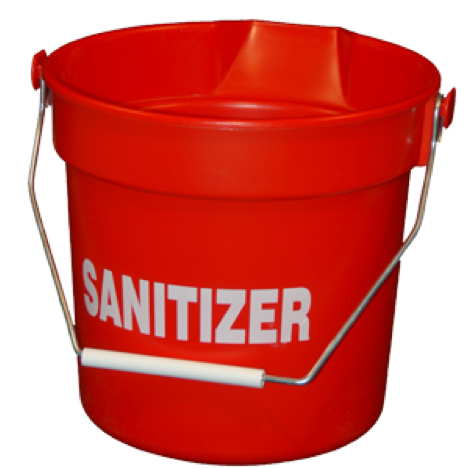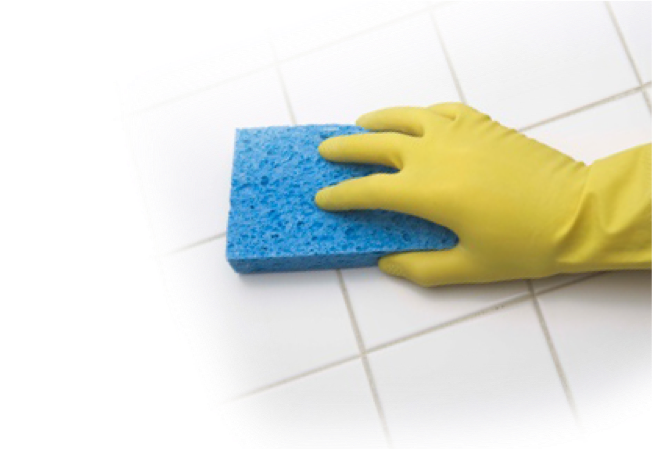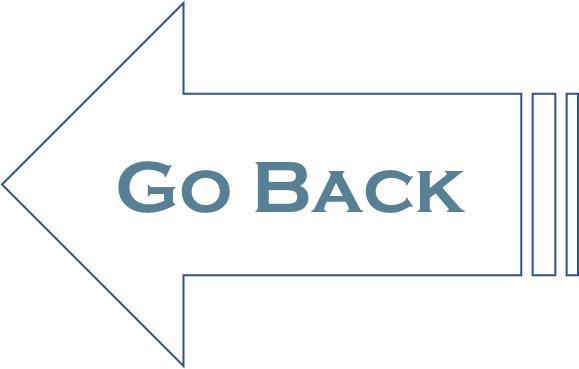Sanitizing versus Disinfecting |
Page 19 |
Bleach manufacturers include two kinds of instructions for bleach use: sanitizing and disinfecting.
Although these terms are sometimes used interchangeably, they mean different things. Before you mix up a bleach solution, be sure you are using the correct instructions. Sanitizing solutions use less bleach than disinfecting solutions. The manufacturer's instructions will tell you the appropriate amount to use.
Although these terms are sometimes used interchangeably, they mean different things. Before you mix up a bleach solution, be sure you are using the correct instructions. Sanitizing solutions use less bleach than disinfecting solutions. The manufacturer's instructions will tell you the appropriate amount to use.
DisinfectingDisinfecting eliminates or inactivates germs. Disinfecting requires a stronger concentration of bleach to kill the germs. Surfaces that should be disinfected include diaper changing tables, potty chairs, toilets, countertops, sinks, floors, drinking fountains, cabinet handles, and doorknobs.
|
Using Bleach-Water Safely in Child Care
Bleach-water solution is poisonous and can be dangerous to children. Keep children safe from accidental poisoning with these simple tips:
- Clean objects and surfaces when children are not around, or place them out of children's reach while they dry.
- Do not allow children to handle bleach-water solution.
- Keep children away from disinfected surfaces until the bleach-water solution dries.
- Store bleach and other toxic chemicals in their original containers in a locked cabinet or closet.
- Store bleach-water solution in a locked cabinet out of children's reach.
- Be sure to label spray bottles so adults will know what's in them.
New Bleach Concentrations Mean New Use Recommendations Effective 3/1/2013
In early 2013, manufacturers of household bleach changed the concentration of bleach sold in stores. The bleach solutions now sold have a higher concentration of sodium hypochlorite (8.25%). The lower-concentration bleaches are no longer being manufactured and soon will not be available in stores. Because the new bleaches are more concentrated, the recommendations for diluting a bleach solution for disinfecting now depend on the specific bleach that is used.
Here are the latest recommendations for bleach use in child care:
In early 2013, manufacturers of household bleach changed the concentration of bleach sold in stores. The bleach solutions now sold have a higher concentration of sodium hypochlorite (8.25%). The lower-concentration bleaches are no longer being manufactured and soon will not be available in stores. Because the new bleaches are more concentrated, the recommendations for diluting a bleach solution for disinfecting now depend on the specific bleach that is used.
Here are the latest recommendations for bleach use in child care:
- Use bleach products that have been registered with the EPA whenever possible. Check the product label for an EPA registration number. If the product has a number, it is EPA-registered.
- If the bleach product is EPA-registered, go to the EPA's Pesticide Product Label System website (http://iaspub.epa.gov/apex/pesticides/f?p=PPLS:1) and enter the EPA registration number into the "EPA Registration Number" field of the online form. You should get a list of dates the EPA approved the product.
- Click on the link next to the most recent EPA approval date. This link will open a PDF file of the manufacturer's instructions. Scroll down to find a chart with instructions for using the product to sanitize or disinfect.
- Follow the instructions on the chart when preparing bleach solution for use in child care. You may want to post these instructions near sinks and cleaning areas or tape the instructions to the bottle.
- If you buy a new brand of bleach, remember to check the new brand using these instructions. The specific recommendations for diluting bleach may be different. Be sure to update any instructions or labels that are posted.
- Do NOT mix household bleach with other household chemicals such as toilet cleaners, rust removers, acids, or products containing ammonia. Mixing these chemicals with bleach may produce toxic hazardous gases.



